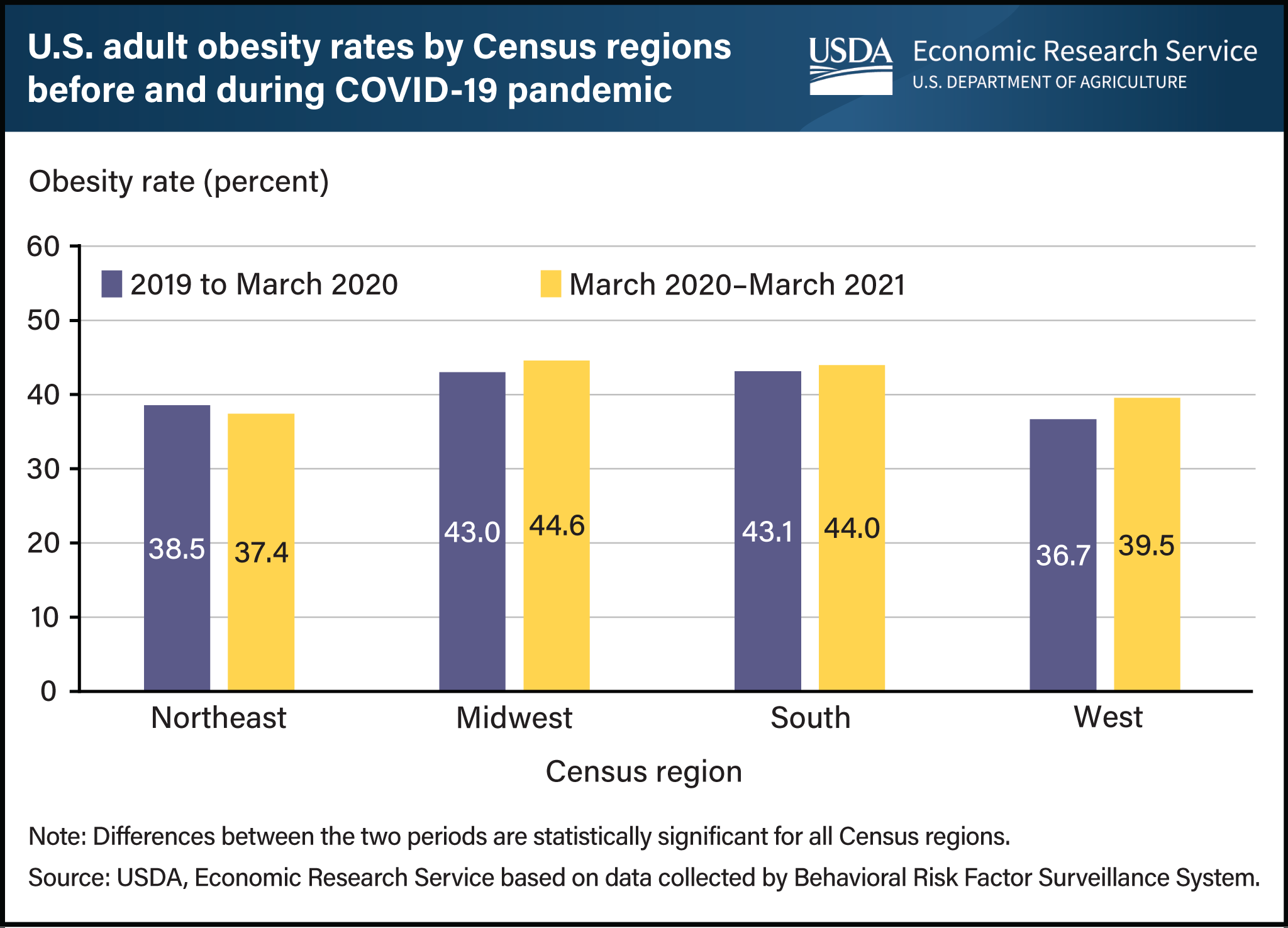U.S. obesity rates grew in most regions during first year of pandemic
- by Kyle Stropkay and Mariah Ehmke
- 8/28/2023

Adult obesity rates varied widely among Census regions of the United States before the Coronavirus (COVID-19) pandemic. During the pandemic, regional obesity rates grew further apart. From 2019 to March 2020, adult obesity rates ranged from a low of 36.7 percent in the West to the highest rate at 43.1 percent in the South, a 6.4-percentage point difference. The regional differences expanded to 7.2 percentage points during the first year of the pandemic, from a low of 37.4 percent in the Northeast to a high of 44.6 percent in the Midwest. The only region that experienced a decline in obesity rates during the first year of the pandemic was the Northeast. The West had the lowest adult obesity rate before the pandemic but experienced the largest increase of any region during the first year of the pandemic, a 2.8-percentage point increase. The obesity rate increase in the West was nearly twice the increase in the South, which had the highest regional obesity rate before the pandemic. The Midwest had the second-highest rate before the pandemic but increased nearly twice as much as the South, emerging as the region with the highest obesity rate during the first year of the pandemic, ending in March 2021. This chart appears in the USDA, Economic Research Service COVID-19 Working Paper: Obesity Prevalence Among U.S. Adult Subpopulations During the First Year of the COVID-19 Pandemic.


